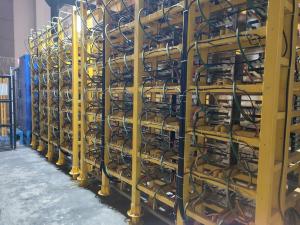India successfully demonstrates ITER power and pulse requirements
As a part of its in-kind commitments to the project, ITER India will deliver two radio-frequency-based power sources (or "gyrotrons") with state-of-the-art specifications (170 GHz, 1MW, up to 3600 s), as wells as four main high voltage power supplies (6MW, 55kV each) for electron cyclotron resonance heating. The deliverables also include the associated auxiliaries and a demonstration of complete system performance at the ITER site. One of the challenges of these complex high-power radio frequency systems is to establish integrated performance that is safe, reliable and easily repeatable despite working in a harsh electromagnetic environment.
In order to validate and demonstrate the required integrated system performance, a megawatt (MW), continuous-wave-class Gyrotron Test Facility (IIGTF) has been developed at ITER India. The facility offers all the necessary auxiliary systems and services such as high-voltage and low-voltage power supplies; control, monitoring and protection systems; radio frequency diagnostic systems; cooling; and vacuum services. (These systems also serve as functional templates for actual ITER deliveries.) A test gyrotron with ITER-relevant specifications, along with a set of waveguide components including dummy loads, has been procured from M/s. GYCOM Russia and fully integrated with the test facility.
Extensive testing and validation of all interfaces was performed before the integrated testing. The main high-voltage power supply was validated for performance specifications including the Joule limit (wire burn test) to ensure the safety of the gyrotron during arcing.
After the interface validation tests, the site acceptance tests of the test gyrotron were successfully completed at ITER India. Output radio frequency power of 1MW at 170 GHz for 1000 s with radio frequency efficiency of about 50 percent was demonstrated during "power and pulse" tests, comprising five successful 1000-second pulses. Various detailed tests such as reliability tests (with a number of successive pulses of 500 s each) and power modulation tests up to 1kHz have also been performed. This significant achievement also confirms the successful commissioning of the megawatt-class, continuous wave Gyrotron Test Facility at ITER India and validates the various auxiliary systems and their integrated performance.



